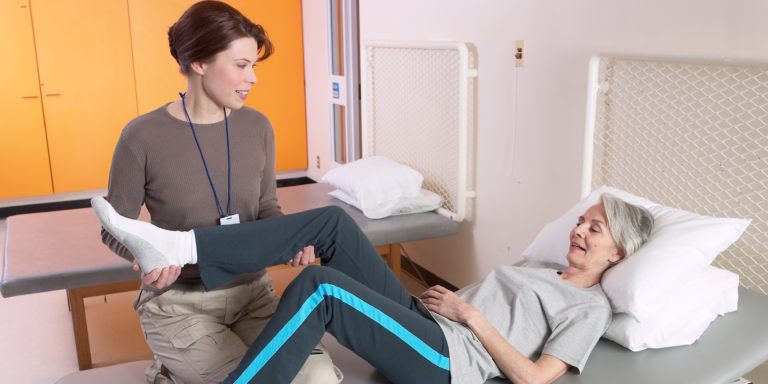
Can Physiotherapy Improve Your Immune System?
Can Physiotherapy Improve Your Immune System? Most people think of physiotherapy as treatment for injuries, pain, or movement limitations—but its benefits extend far beyond rehabilitation.

In a world driven by high-tech treatments and quick-fix medications, manual therapy might seem a bit… old school. But here’s the surprising truth—this hands-on technique remains one of the most effective, versatile, and underappreciated forms of therapy available today.
Sure, we all know manual therapy helps with back pain and tight muscles. But that’s just scratching the surface. Let’s dive deep into the most overlooked benefits of manual therapy that might just change how you view healing and recovery.
Manual therapy is a specialized form of physical treatment delivered by licensed professionals—like physiotherapists, osteopaths, or chiropractors—who use their hands to:
Mobilize joints
Manipulate soft tissue
Improve circulation
Restore function
Reduce pain and stiffness
Unlike machines or medication, it taps into the body’s natural healing processes. And when applied correctly, its effects go far beyond short-term relief
One of the most underestimated powers of manual therapy is its ability to activate your body’s own healing systems. When a practitioner performs targeted manipulations or soft tissue techniques, they stimulate:
Blood flow to the affected area
Lymphatic drainage to remove toxins
Neurological feedback to calm overactive pain signals
This hands-on approach doesn’t just treat the symptom—it empowers the body to heal itself, naturally and sustainably.
Wait—manual therapy can help your mental health? Absolutely.
Physical touch, especially when delivered with therapeutic intent, can:
Lower cortisol levels (the stress hormone)
Increase endorphins and serotonin
Promote relaxation by calming the nervous system
Reduce symptoms of anxiety, depression, and burnout
Patients often report feeling emotionally lighter after a session—not just physically better. It’s a mind-body connection that’s often overlooked but deeply impactful.
Can’t sleep? Manual therapy might be your secret weapon.
By reducing muscle tension, realigning posture, and calming the nervous system, manual therapy prepares your body for restful sleep. Some benefits include:
Decreased pain that disrupts sleep
Better melatonin production through parasympathetic activation
Improved breathing and circulation during rest
Many patients experience deeper, longer, and more restorative sleep after just a few sessions.
Poor posture is more than just an aesthetic issue—it causes chronic pain, poor breathing, and reduced performance. Manual therapy directly addresses postural issues by:
Releasing tight fascia and overworked muscles
Realigning the spine and major joints
Restoring joint mobility and flexibility
These improvements can make everyday movements smoother, lighter, and pain-free. You might even walk out of a session feeling taller—literally.
Most athletes use manual therapy after an injury—but the real game-changer is using it before. Regular manual therapy can:
Identify and correct muscle imbalances
Enhance joint range of motion
Reduce inflammation and scar tissue buildup
Prevent overuse injuries
Even weekend warriors can benefit. Whether you’re lifting weights, running marathons, or chasing your kids around, manual therapy helps your body function at its best.
Scars aren’t just skin deep—they can restrict movement and cause hidden pain. Manual therapy techniques such as myofascial release and cross-fiber friction:
Break down adhesions
Improve circulation to scarred areas
Increase skin and muscle elasticity
Reduce visible scar formation over time
If you’ve had surgery or trauma, incorporating manual therapy into your recovery plan can significantly enhance long-term mobility.
Manual therapy doesn’t just stop at muscles and bones. Some practitioners specialize in visceral manipulation—gentle techniques that target the internal organs. This can:
Improve digestion
Reduce bloating and constipation
Ease symptoms of IBS
Support liver and kidney detoxification
It sounds unconventional, but for many patients, it brings relief where medications have failed.
In an era of opioid addiction and over-medication, manual therapy offers a drug-free alternative. Through consistent treatment, many patients find they can:
Reduce or eliminate NSAIDs and pain medications
Rely less on muscle relaxants or sleep aids
Avoid the side effects of long-term drug use
This is especially beneficial for individuals with chronic pain, who seek a sustainable and natural solution.
Better circulation means more oxygen and nutrients delivered to the tissues—and that equals faster healing. Manual therapy enhances:
Venous return, reducing swelling and fluid retention
Lymphatic drainage, boosting immunity
Arterial circulation, energizing tired muscles and organs
This is particularly helpful after surgery, injury, or during detox programs.
Manual therapy also plays a growing role in women’s health, particularly through techniques focused on:
Pelvic floor alignment
Menstrual pain reduction
Postpartum recovery
Hormonal regulation through nerve system balance
By reducing stress and improving circulation, manual therapy helps normalize hormonal rhythms and eases discomfort tied to reproductive health.
Tight chest muscles, poor posture, or even past injuries can limit your ability to breathe deeply. Manual therapy helps by:
Releasing tension in intercostal muscles
Mobilizing the rib cage and thoracic spine
Increasing lung capacity
Better breathing means more oxygen, less fatigue, and even enhanced mental clarity.
Tension headaches and TMJ disorders are often rooted in muscular or structural problems. Manual therapy addresses these by:
Releasing tight neck and jaw muscles
Correcting postural misalignments
Improving cranial and cervical mobility
Patients often report fewer headaches, less jaw clenching, and even better focus after targeted manual therapy.
As we’ve seen, manual therapy offers far more than just pain relief. From hormonal support to emotional balance, it’s a full-body, mind-and-soul treatment that unlocks the body’s healing potential.
The key is consistency and working with a skilled practitioner who understands your body’s unique needs. Don’t wait for a crisis to explore the transformative effects of manual therapy—start now, and let your body thank you later.
Is manual therapy the same as massage?
Not exactly. While both use hands-on techniques, manual therapy is more clinical and focuses on structural corrections and function.
How often should I get manual therapy?
That depends on your condition, goals, and progress. Some people benefit from weekly sessions; others need them monthly for maintenance.
Can manual therapy be painful?
Some techniques may cause mild discomfort, especially in tight areas. However, the result is usually relief and improved mobility.
Is manual therapy covered by insurance?
Many insurance plans do cover it if prescribed by a doctor or physiotherapist. Always check with your provider first.
Can manual therapy help with stress?
Yes! By calming the nervous system and improving circulation, manual therapy reduces physical and emotional tension.
Do I need a referral to start manual therapy?
In most cases, no referral is needed. You can book directly with a licensed therapist or physiotherapy clinic.
The most overlooked benefits of manual therapy are often the ones that make the biggest difference. Whether you’re dealing with chronic pain, recovering from injury, or simply looking to optimize your health, this powerful, hands-on technique offers a world of benefits that go far beyond what most expect.
In a healthcare system increasingly focused on pills and machines, manual therapy brings us back to what healing really is: skilled touch, human connection, and the body’s innate ability to restore itself.

Can Physiotherapy Improve Your Immune System? Most people think of physiotherapy as treatment for injuries, pain, or movement limitations—but its benefits extend far beyond rehabilitation.

Headaches and Tension? Try These Hands-On Osteopathic Solutions Headaches caused by tension can be draining, distracting, and downright frustrating. Whether they come from long hours

Isometric Exercises: Why We Recommend Them in Recovery When you’re healing from an injury, not all exercises are safe—some movements can even set you back.